Gamma major scales, a major labyrinth
04 December 2010 Filed in: Alternate
controllers | Tuning
Theory
Wendy Carlos wrote that Carlos Gamma has “no palpable difference from Just tuning in harmonies” so, what about creating diatonic scales with it?
While working on this subject I have found out that different approaches are possible and that each one of them leads to distinct solutions: I have created scales by ear, by hand position (with my isomorphic keyboard) and by adding repeating patterns but all the scales I have “discovered”, that sound consistent with a root note, have something in common, they are based on disjunct tetrachords!
Why try to apply concepts borrowed from octave-based tuning systems to non-octave ones such as Carlos Gamma?
Because Gamma seems ideally suited to something like that and because, while exploring new tuning systems, we may start from something we are already familiar with, trying to make sense of the maze of new notes, intervals and harmonies unfolding in front of us.
The tricky part, trying to apply the above-mentioned concepts to Carlos Gamma, is that both tetrachords and “octaves” can be either narrower or wider than, respectively, 498.045 cents (4:3 ratio) and 1200 cents (ratio 2:1).
Let’s see what I mean (all following examples feature my “C central” note layout):
The first scale I came up with was the one I call “C Gamma Major Right”.
It is a “major” scale starting on C0 extending over a triple “octave”.
Listen to “C Gamma Major Right”.
First see how it appears using my notation (I use a 7/4 time signature to include the 7 notes spanning an “octave” within one bar):


Each tetrachord is repeated twice and the last note of the previous one becomes the first of the following one.
Then see how it looks on my Chameleon:
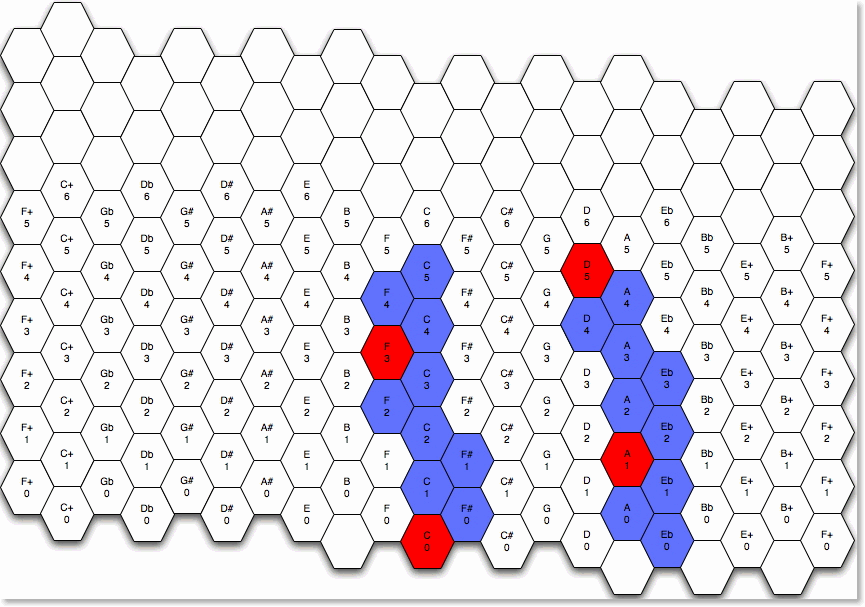

The scale develops to the right of the root note, that’s why I call it “C Gamma Major Right”. Red notes indicate “octaves”.
Neither all tetrachords nor all “octaves” are equal to adjust to the non-octave nature of Carlos Gamma!
The diagram below shows the structure of this scale using Carlos Gamma steps (CGS), 1 CGS equals 35.098 cents. Each row equals one “octave”. The eighth step of each “octave” is also the first of the following row. In parentheses you see the distance, in CGS, between that note and the root note.

You see that the structure of the first and third “octave” is the same while the second one is different.
The starting point for this scale was the hand position (a scale “easily” playable with one hand).
After “discovering” this scale I figured that something similar could also be created on the left of the root note, so I built “C Gamma Major Left”.
See how it looks on my Chameleon:

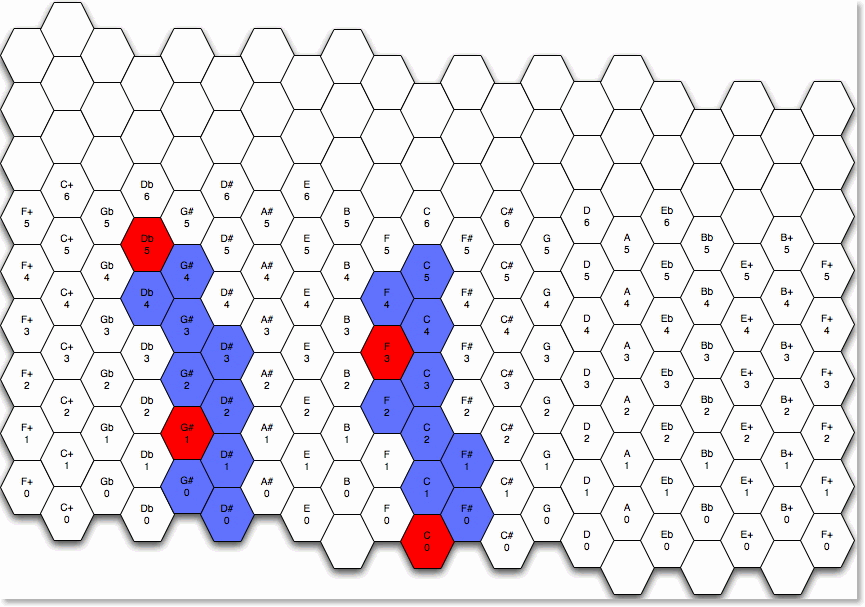
Listen to “C Gamma Major Left”
This is how it looks with my note layout:


Again, each tetrachord is repeated twice and the last note of the previous one becomes the first of the following one.
The structure of this scale is:

Again, the structure of the first and third “octave” is the same while the second one is different but the order of tetrachords is the inverse of that of the previous scale.
The starting point for this scale was again the hand position (a scale “easily” playable with one hand).
After creating these two scales I thought there could be other ones combining the properties of both. So, I created “C Gamma Major Central 1”.
Listen to “C Gamma Major Central 1”
See how it looks on my Chameleon:

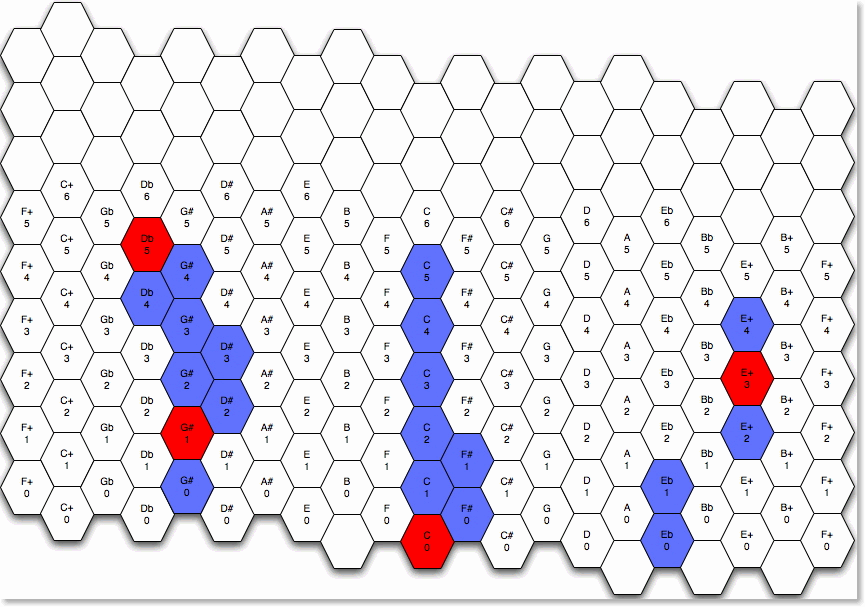
This is, obviously, a scale you can not play with one hand. It is also much harder to memorize. Notice that this scale uses notes on seven columns instead of six, as the previous ones.
This is how it looks with my note layout:


The structure of this scale is:

This time the structure of the first two “octaves” is the same and the third is different.
After this scale I created a variation I call “C Gamma Major Central 2”
Listen to “C Gamma Major Central 2”
See how it looks on my Chameleon:

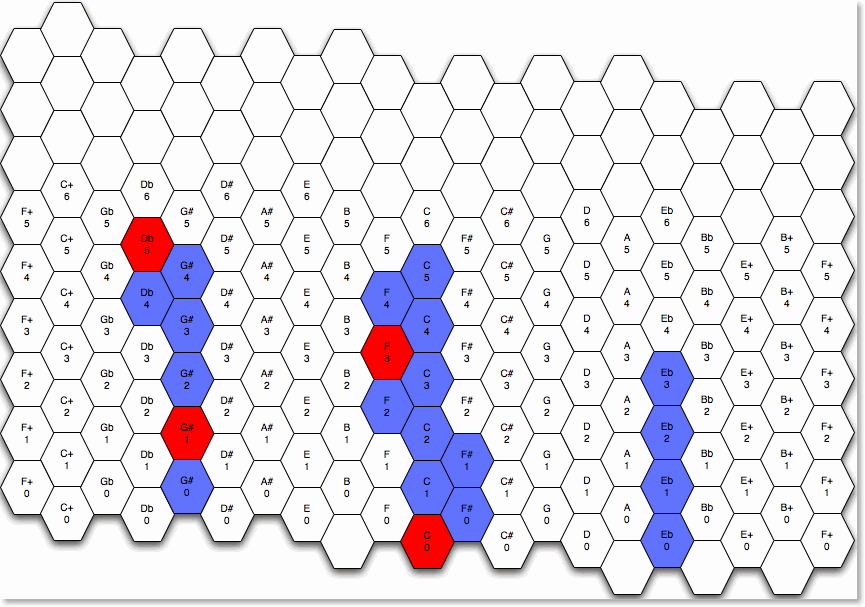
Again, this is a scale you can not play with one hand but, at least, it uses notes on “only” six columns. Notice also that the distance from the leftmost column of the scale (Db) to the rightmost column of the scale (Eb) is 14 columns. Compare this value with the 16 columns span of “C Gamma Central 1”.
This is how it looks with my note layout:


The structure of this scale is:

All three “octaves” of this scale use different tetrachords.
The first “octave of this scale and that of “C Gamma Central 1” are exactly the same.
The two “C Gamma Major Central “ scales were created by ear.
The third approach I have tried in finding diatonic scales, within Carlos Gamma, has been adding repeating patterns. Let’s see “C Gamma Major 34”
Listen to “C Gamma Major 34”
See how it looks on my Chameleon:

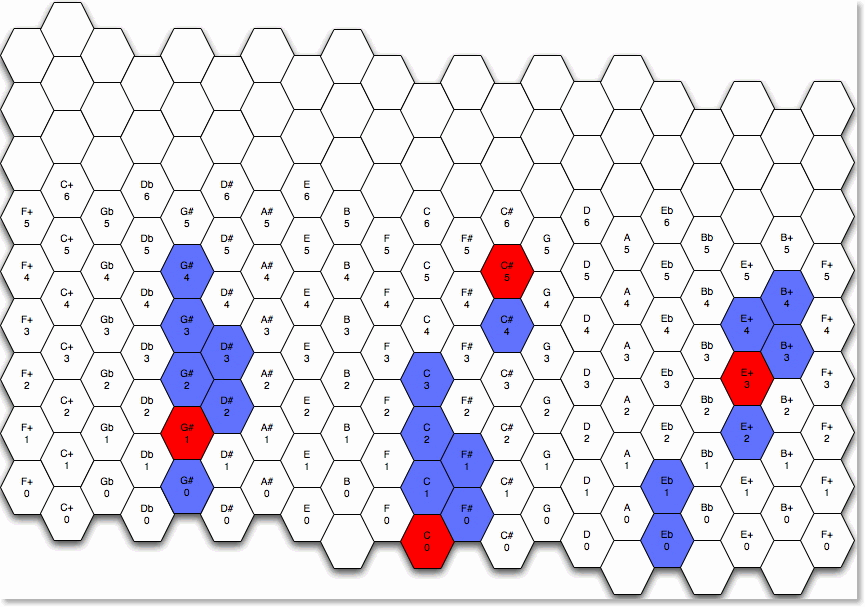
It is called “C Gamma Major 34” because it is a pattern 34 CGS long repeated three times (34 CGS equal 1193.324 cents).
The first “octave of this scale and that of “C Gamma Central 1” are exactly the same.
This scale spans 16 columns from the leftmost one (G#) to the rightmost one (B+) and utilizes notes on 8 different columns.
This is how it looks with my note layout:


The structure of this scale is:

It looks nice on paper because the three “octaves” have the same tetrachordal structure but the triple “octave”, for example, is off ratio 8:1 by 20 cents (3580 cents or 102 CGS). The triple “octave” of “C Gamma Major Central 2” , for example, sounds better at 103 CGS or 3615 cents.
Finally, I present a scale that does NOT follow the rule “each tetrachord is repeated twice and the last note of the previous one becomes the first of the following one” and you will hear there is something wrong. It’s called “C Gamma Major 35” because it is a pattern 35 CGS long repeated three times (35 CGS equal 1228.43 cents).
Listen to “C Gamma Major 35”
See how it looks on my Chameleon:

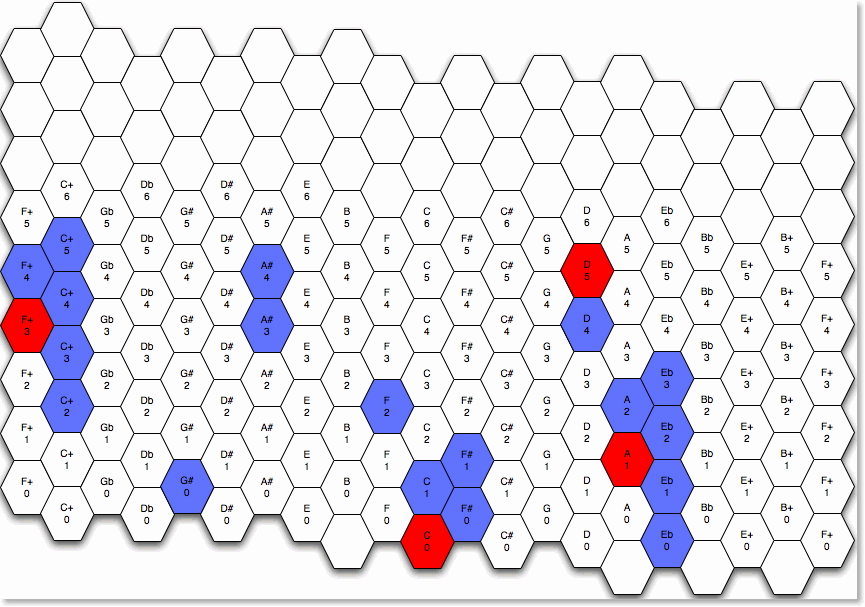
This scale spans 17 columns from the leftmost one (F+) to the rightmost one (Eb) and utilizes notes on 10 different columns.
The first “octave of this scale and that of “C Gamma Central 1” are exactly the same.
This is how it looks with my note layout:


The structure of this scale is:

There is also an exception: the last note of the third “octave” should be 105 CGS above the root note but it would be off ratio 8:1 by 85 cents (3685 cents).
CONCLUSIONS
Considerations in building scales should take into account the required degree of consonance/dissonance and its playbility, determined by the number of columns, of an isomorphic keyboard, used by it.
Forcing concepts borrowed from octave-based tuning systems to non-octave ones such as Carlos Gamma require, if at all possible, a great deal of efforts. It can be a very good exercise and I can testify I learned something new while writing this article. Nevertheless artistic expression can do without all this theory and number crunching, as, hopefully, I already proved with my catalog of Gamma music and videos.

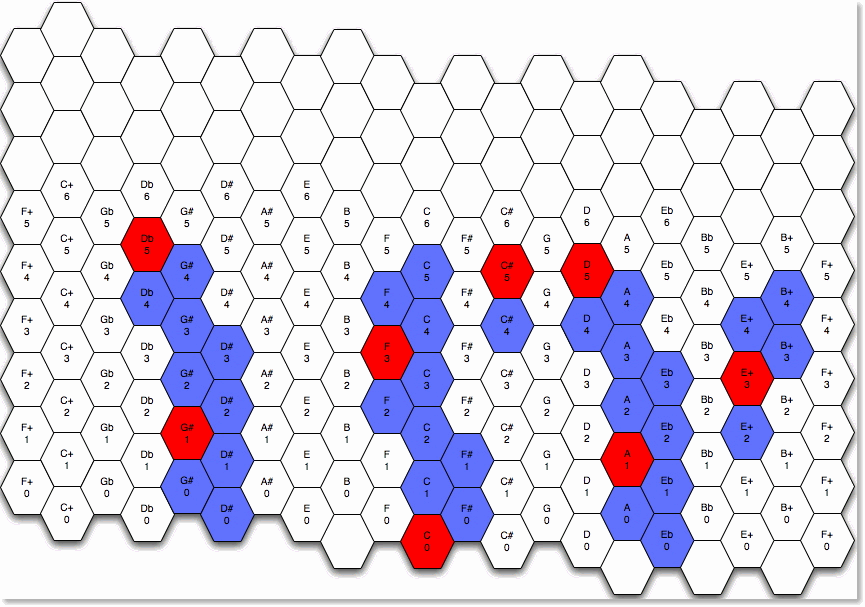
The above picture shows a compound view of all the notes used by the scales presented here (except “C Gamma Major 35” ).
They are all notes used to replicate a single major scale in 12tET!
Need I say more?


